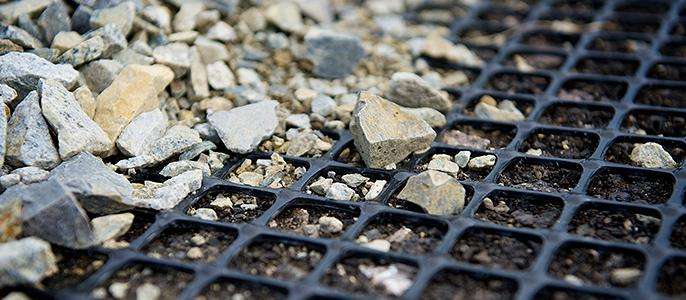
Privacy statement: Your privacy is very important to Us. Our company promises not to disclose your personal information to any external company with out your explicit permission.

Exploring The Different Types of Geogrids Used In Construction
Across several industries, contractors rely on different types of geogrids for soil stabilization. Geogrids are intersecting grids of polymeric materials such as polyester, polypropylene, and high-density polyethylene. Their purpose is to improve the functions of conventional construction materials, making processes more cost-effective, efficient, and reliable.
Types of Geogrids
Geogrids are typically classified into three categories, uniaxial, biaxial, and multiaxial. Uniaxial geogrids are made from high-density polyethylene resins and are designed to resist elongation under heavy pressure over long spans of time. They are manufactured by stretching the ribs in a longitudinal direction which gives it high tensile strength along that axis. Highly resistant to chemical degradation, they remain durable in soils with high ph levels and are suitable for both wet and dry environments. They are ideal for wall and slope applications such as retaining walls, landfill liner systems, embankments over soft soils, and extra steep earthwork slopes Biaxial grids, unlike their uniaxial counterparts, are manufactured by stretching the ribs in both transverse and longitudinal directions. This creates tensile strength across both axes rather than just one. Biaxial Geogrids are commonly used in applications such as foundations for roadbeds, railroad truck beds, permanent unpaved roads, airport runways, construction haul roads, working platforms on weak subgrades, and parking lots. Finally, there are multiaxial geogrids. In addition to the transverse and longitudinal pattern of biaxial, multiaxial geogrids add diagonal ribs. The third direction increases the grid`s stiffness while improving its strength. They also have powerful UV stabilization and chemical, biological resistance. Multiaxial geogrids have a high loading capacity in all directions and are often applied during roadway construction. 
There are a few different ways that these types of geogrids are manufactured. One method is by extrusion. This is when a flat sheet of polymeric material is formed into a geogrid by extruding holes through the sheet, forming `apertures`. This is done to improve tensile strength. Another method is weaving. Weaving involves stitching fibrous yarns to form apertures between flexible joints. This technique improves the tenacity of the grid. Finally, they can be created through welding and extrusion. The extrusion of the ribs is done by passing them through rollers that are then welded into sections that form apertures.
Why are geogrids so widely used? Because their benefits are undeniable for countless applications. Geogrids promote soil stabilization which allows a higher strength soil mass. This is ideal for land optimization, the process where soil that is unsuitable for construction is prepared to allow a higher load-bearing capacity that can be built upon. In addition, geogrids are used near waterways as part of a composite system involving a geotextile to protect the shoreline and water quality.
Geogrids also have several benefits for those carrying out the construction. For example, they can be installed under any weather condition and do not require mortar. Geogrids are readily available materials that are both flexible and durable. This makes it easy to install and versatile across a wide range of applications. Their flexibility also provides resistance from stresses and pressure.


Privacy statement: Your privacy is very important to Us. Our company promises not to disclose your personal information to any external company with out your explicit permission.

Fill in more information so that we can get in touch with you faster
Privacy statement: Your privacy is very important to Us. Our company promises not to disclose your personal information to any external company with out your explicit permission.